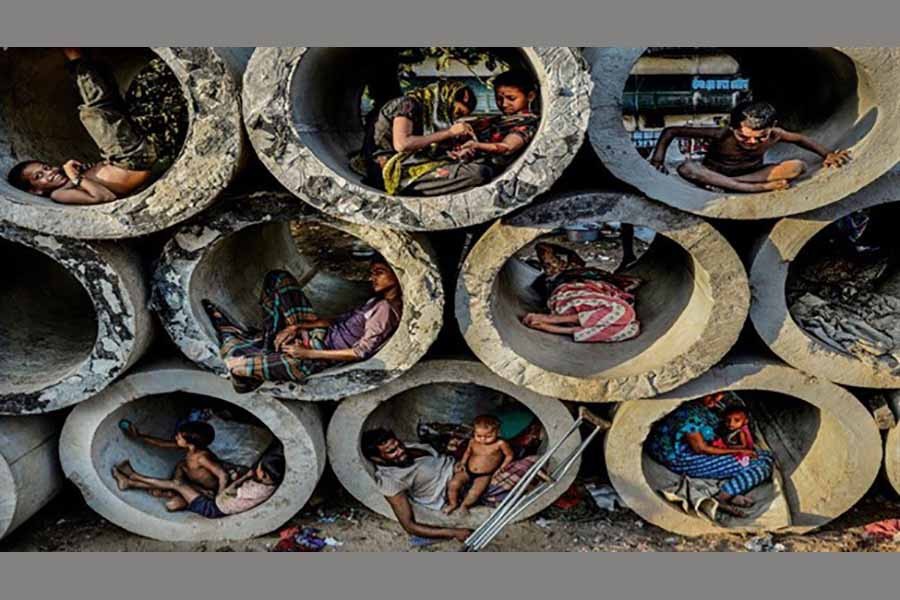
Published :
Updated :

Researches from the International Food Policy Research Institute (IFPRI) show that over the last three years or so (2012 to 2015), the incidence of chronic poverty and hunger has gone down. This is undoubtedly good news for Bangladesh although the period of comparison spans over three years and 'luckily' leaves out 2017. In a Workshop titled "Eliminating Hunger and Malnutrition: Are Sustainable Solutions in Sight?", organized by IFPRI under the aegis of USAID, Akhter Ahmed and Salauddin Tauseef brought to the fore two pertinent issues that tend to haunt policy-makers of Bangladesh. One is "Poverty Dynamics in Rural Bangladesh", and the other "Zero Hunger. What should we do to achieve the goal? From the angle of meeting Sustainable Development Goals (SDG) , the authors have apparently attempted to address the first and the second goal of SDG that are closely, if not perfectly related. In fact the two are positively correlated. More poverty is likely to lead to more hunger and vice versa. Since Bangladesh is committed to address goals 1 and 2 of SDG, as enshrined in the Seventh Five Year Plan, on this score alone, the authors deserve appreciation for providing most recent information based on longitudinal household survey data.
Between 2011 to 2015, observed the researchers, roughly 60 per cent of the non-poor remained non-poor while roughly 16 per cent poor moved out of poverty. About one-tenths non-poor fell into poverty, and roughly one-fifths remained poor. There is thus both ascent and descent among the chronic poor where poverty is measured in terms of consumption per capita. The authors also identified the factors accounting for descent of the poor into chronic poverty: increased human capital in the household, physical asset, non-farm engagement, women's empowerment etc. The descent follows from the absence of the just mentioned defectors. The policy points suggested by the authors to escape chronic poverty are, among others, more quality schooling, non-farm engagement.
In another important presentation, Akhter Ahmed showed that the prevalence of hunger has declined in rural Bangladesh between 2012 to 2016 from about 5.0 per cent to 4.0 percent -- marginal decline in moderate and severe hunger. In fact, the dynamics of hunger show that about 92 per cent never reported hunger, about 4.0 percent moved out of hunger and 3.0 per cent fell into hunger. The prevalence of hunger is highest in Barisal followed by Sylhet and the pace of improvement in Barisal is higher. The main causes of hunger are: high dependency ratio, no remittance income, increased rice price, high medical expenses etc. ,
The authors have followed "poverty trap approach" to delve into the dynamics of chronic poverty. This approach assumes that little asset endowment of poor households make it hard to move out of poverty cave, and thus exogenous factors play a role in the alleviation of chronic poverty.
Chronic poverty takes shape not only from low endowments but from a "mismatch" between structure of endowments possessed by the poor and the structure of opportunities open to them. For this reasons possibly, there is no mention of macroeconomic environment in easing chronic poverty in the researchers' recommendation. Chronic poverty may persist with or without a trap. If equated with trap, it implicitly assumes a long time span. How long a person need to be in poverty to fall into chronic poverty?
Economic growth is not necessarily important in reducing chronic poverty as conventional wisdom would have suggested; rather it could be an important tool. We should take into due cognizance of the difference between macro and structural constraints. When macro constraint is binding, rapid growth may help poor move up the ladder but if structural constraint is binding, rapid growth may not serve the desired purpose. Here the pattern of growth becomes important. It implies that economic growth pattern should be such that it aligns structure of opportunities for poor more in conformity with structure of endowments. In order to achieve this alignment better, pursuit of an appropriate pattern of growth will have to be supplemented by targeted intervention so as to alter the structure of endowments. Take for example, we provide a sewing machine to a woman who cannot market the product or provide education to a boy who cannot employ himself or provide an asset to produce a product for which there is no opportunities to market. The poverty-trap approach would find a solution through external help but the other approach would find a solution within the system if macroeconomic constraints are removed.
The authors, from the point of view of their arguments, also found use of asset transfer in graduating the chronic poor. This impression could be right from the perspective of "poverty trap" approach. But if the mismatch of endowments and opportunities are factored in, the importance of asset transfer becomes very relevant. In fact, worldwide gradation model based on asset transfer has become important advocacy product these days. Finally, in dealing with chronic poverty, one should be careful not to mix extreme poverty with chronic poverty. They are not necessarily the same - the former points to the severity of poverty while the latter shows duration of poverty. An extreme poor person may not be chronically poor; even a moderate or non-poor may be chronic in his/her respective position.
Abdul Bayes is a former
professor of economics at Jahangirnagar University. abdul.bayes@brac.net


 For all latest news, follow The Financial Express Google News channel.
For all latest news, follow The Financial Express Google News channel.